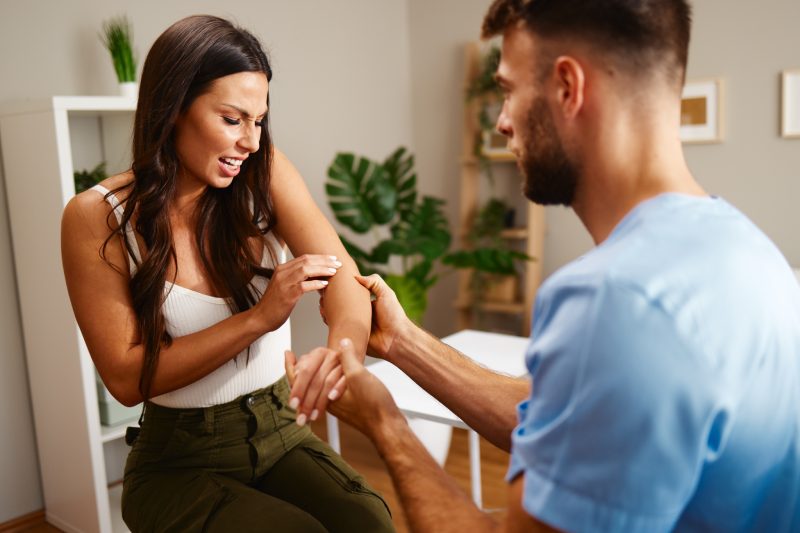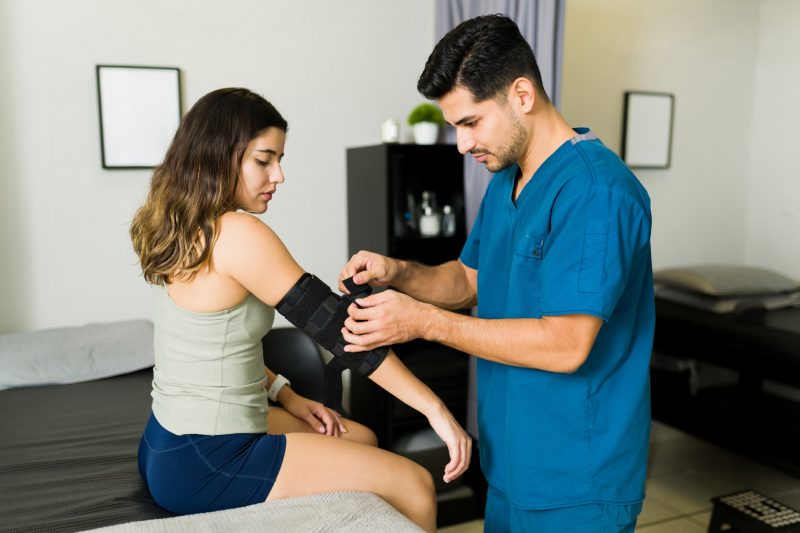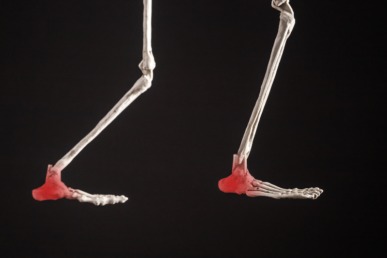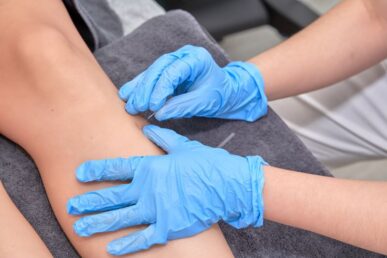Not everyone plays tennis. But anyone can develop tennis elbow. It’s a condition with moderate to intense pain in and around the forearm that disables you from lifting objects. So, if you’re in a job that requires you to handle items or be a homemaker, tennis elbow would mean disability.
But thankfully, tennis elbow is easy to treat. You can relieve the pain and get back to work with a few simple at-home exercises. This is the ultimate guide to treating tennis elbow, where you will learn what causes it, how to identify it, how it’s diagnosed, and the treatment options available.
What is Tennis Elbow, and What Causes It?

Tennis elbow, also known as lateral epicondylitis in medical terms, is a condition where you injure your tendons, thereby inducing pain. Tendons are tissues that connect muscles with bones. When the tendons are damaged, you’re likely to feel pain in the outer elbow when moving that section.
The primary cause of tennis below is repetitive movement, which strains the tendons. In a sport like tennis, the players will hit the ball with a racket again and again. At some point, the muscles get overworked, and there’s inflammation. This condition is called tendinitis. Besides that, the muscles are overloading, which creates a degenerative process called tendinosis. When there’s simultaneous tendinitis and tendinosis, tendons begin to tear, thus causing tennis elbow.
A sudden blow to the region can also cause tennis elbow. Here, the blow injures the tendons and creates inflammation.
Lastly, some people can develop tennis elbow out of nowhere. This is called idiopathic tennis elbow. The reasons behind what causes it remains unknown.
Symptoms of Tennis Elbow

So how do you know you have developed tennis elbow? The condition remains rare, with only 1-3% of the population suffering. Thus, there’s little to no knowledge among the general public, and they often wrongly confuse it with a golfer’s elbow, which is a related but different injury condition.
So how do you identify tennis elbow?
A sure-shot sign is if you’re performing repetitive action that stresses forearm joints and experience pain in the outer elbow. The pain can occur when you move the elbow on the affected forearm or touch that region. Most patients eventually feel pain in the upper arm and other parts of the hand. If you experience a gradual increase in pain, you should know it’s tennis elbow.
Patients with this condition also fail to get a strong grip and have less mobility and flexibility. Others report of experiencing intense pain during night hours.
All in all, here are the signs to look out for:
- Pain in the elbow region due to repetitive motion
- Painful to touch
- Stiffness and swelling
- Burning sensation
- Weakened grip
In the idiopathic tennis elbow, the pain will start in the same region and eventually spread to the rest of the hand. As already said, it doesn’t require repetitive motion and can occur out of nowhere. Diagnosing idiopathic tennis elbow can be tricky, and it’s best to consult a physician.
How is Tennis Elbow Diagnosed?
If you spot the symptoms of tennis elbow, it’s better to get diagnosed by a physician. They will confirm the condition and suggest appropriate treatment. Once you walk into a physician’s office, they will probe your lifestyle and daily routine.
Here, they check if you have a history of repetitive motion of the region. Then, they will ask you to get X-ray scans to ensure it’s not arthritis or bone damage. Once these are ruled out, you’ll be asked to get an ultrasound, MRI, or CT scan done. These scans check for damage to the tendons and surrounding muscles. Lastly, the physician may ask for EMG or Electromyography test to check for compressed nerves.
Once all the checks are confirmed, he or she may diagnose you with tennis elbow.
Treatment of Tennis Elbow

Pain induced by tennis elbow will affect your everyday life. Therefore, it’s necessary to get treated as soon as possible.
If it’s in the early stages, the elbow pain will usually subside in a day or two. You don’t need to stress too much about it. However, in severe cases, full recovery may take up to 18 months. Also, you may be required to go for a nonsurgical treatment for quick recovery.
Here are the best treatment strategies available for tennis elbow. They are recommended from some of the top chiropractors specializing in tennis elbow in Austin, TX:
- Proper Rest – Rest is the go-to treatment for most sufferers. In most cases, you must avoid repetitive motion and let the tendon tear heal. Depending on the injury, it may take a couple of days to a month to recover.
- Braces – Wearing braces for a set period can help you heal faster. The aim is to prevent repetitive movement altogether. Braces will prevent that from happening, thereby aiding the healing process.
- Massage therapy – Gentle massage can also cure tennis elbow. The area becomes sensitive to touch. Therefore, you need to massage in a certain way. You may or may not use oil for massage. What matters is the technique and location.
- NSAIDs – NSAIDs stand for Nonsteroidal anti-inflammatory drugs. Certain drugs can help with tennis elbow. This includes ibuprofen and naproxen. Athletes usually take NSAIDs since they don’t contain steroids.
- Steroids – Certain steroids are also available for tennis elbow. Injectable corticosteroids are commonly used to suppress joint pain temporarily. But it’s not a permanent solution and must be injected into the elbow area with acute precision.
- PRP therapy – Plasmas are small cell fragments that speed up muscular damage healing. You can opt for platelet-rich plasmas to treat tennis elbow. A skilled practitioner will remove the blood and inject PRP into the injured area.
- Extracorporeal shock wave therapy – The aim of shock therapy is to break up the scar tissue. This improves blood flow into the region, speeding up healing.
- Tenotomy – Removal of degenerative tendon tissue from the tendon can cure underlying reasons for tennis elbow. This is a minimally invasive procedure and serves as an alternative to surgery.
Exercises to Treat Tennis Elbow at Home
Most tennis elbow patients treat themselves at home. Besides rest and braces, there are some exercises that help you heal faster.
These are:
Fist clench
Fist clench involves holding and pressing a towel in your fist, palms facing upwards, and the forearm resting on a table. This improves grip strength and builds stronger forearm muscles.
Dumbbell supination
The supination exercise works out the supinator muscle, the forearm muscle, which attaches to the elbow. This muscle is often involved in the repetitive motion that causes the tennis elbow. For this exercise, take a dumbbell in the affected hand, fixate the elbow on a table or your knees, and rotate the wrist. Keep the elbow and upper arm still while working out the lower arm.
Wrist extension
When you bend your wrists, you use a group of muscles called wrist extensors. In repetitive motions that lead to tennis elbow, the wrist extensors are often overused, so pain spreads to the rest of the hand. If that’s the case, perform a wrist extension exercise. Take a dumbbell in your hand, palm facing downwards and elbow resting on knees, and curl the wrist up and down.
If the pain continues, it’s crucial to seek expert advice immediately. Visit our home page to set up an appointment with a sports medicine chiropractor.





